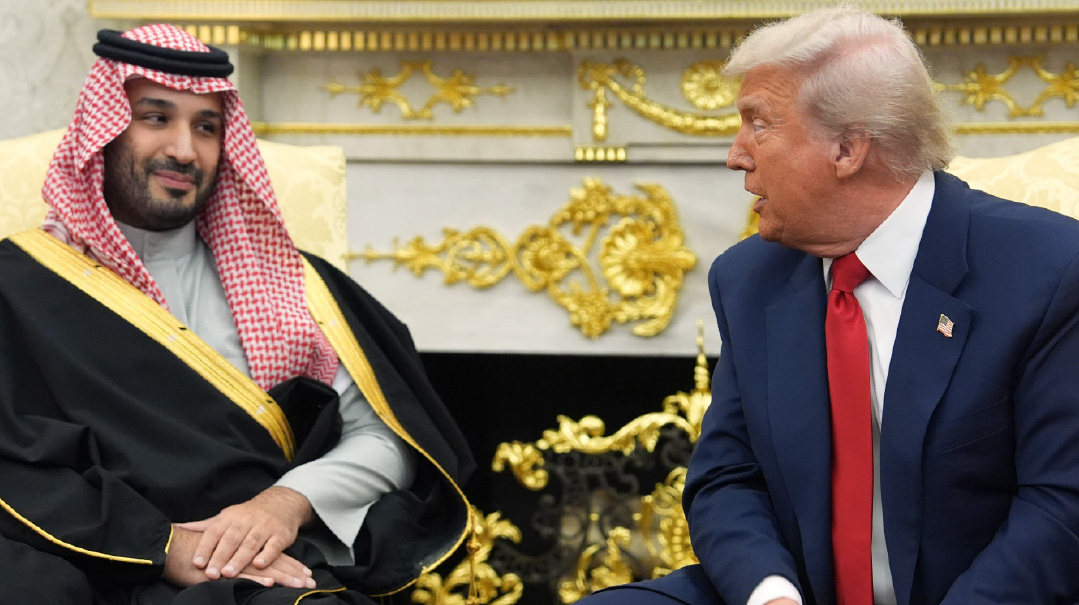How Much Cutting Is Too Much?

Can DOGE cut its way through America's debt?

Photo: AP Images
The US Treasury recently reported that the government spent $2.44 trillion in the last year “to ensure the well-being of the people of the United States,” in their words.
This number indeed redefines the frequently used description of America as a “malchus shel chesed.” The $2.44 trillion included budgetary giants like Social Security, Medicare, and Medicaid, along with more than $567 billion in expenditures for programs aimed at children and youth aged 18 and younger.
In the last fiscal or budgetary year, the US budget hit a new record of $6.75 trillion. This includes national defense and interest on the country’s inflated national debt, which has tripled to $36 trillion and counting over the past 20 years.
According to the Treasury Department, the government collected just $4.92 trillion in revenue, resulting in a $1.8 trillion deficit.
How long can America sustain such generosity while its budget is drowning in red ink? Unfortunately, there is no clear answer to that question, as Congress approaches a March 14 deadline to pass a “continuing resolution” — a temporary measure that would postpone long-term budgetary decisions and keep the government operating for another six months — or risk a shutdown that would disrupt vital services like passport issuance and small business loans, and lead to furloughs of some federal employees without pay during the shutdown.
Such a shutdown would also be detrimental to the economy. Goldman Sachs estimates that the 35-day shutdown during President Trump’s first term cost the economy $11 billion in lost growth. As President Trump 2.0 reaches the halfway point of his first 100 days in office, this developing story will likely dominate news in the upcoming week.
Distributing the funds the federal government has been giving away may require chesed, but closing the fiscal gap will require a strong dose of gevurah.
DOGE, the Department of Government Efficiency led by Trump appointee Elon Musk, aims to cut between $1 trillion and $2 trillion in excess spending during Trump’s term. As of last week, DOGE claims to have saved $65 billion, which critics argue is substantially inflated if you calculate the figures posted on its website, which is updated weekly.
In a pundit landscape divided by two extremes — those who believe Trump is an infallible genius several moves ahead on the global chessboard, and others suffering from Trump Derangement Syndrome who wouldn’t give him credit even if he found a cure for the common cold — some grounded analysts have analyzed the numbers regarding DOGE and expressed skepticism over the hype.
“Achieving the dollar amounts [DOGE] mentioned would be very challenging,” stated Dr. Ira Kalish, chief global economist at Deloitte, one of the world’s “Big Four” accounting firms.
Four Profligate Presidents
In Deloitte’s annual economic forecast, Dr. Kalish maintained that in a realistic best-case scenario, DOGE might identify a total of $400 billion in cuts that could be enacted in the next two years by reducing wasteful Obamacare subsidies and transfers, modestly reducing other nonessential spending, and shutting down the Department of Education.
Two months ago, economists at the Peterson Foundation released a report identifying $236 billion in cuts classified by the Government Accountability Office (GAO) as “improper payments.” These payments are not necessarily fraudulent but arise from insufficient documentation or human error. Eighty percent of that figure is derived from programs on the GAO’s “High-Risk List,” such as Medicare, Medicaid, and unemployment insurance.
According to the Peterson Foundation: “Eliminating that waste is essential to appropriately and efficiently manage federal funds, enhance the public’s confidence in government, and avoid unnecessary increases in the national debt.”
Between Deloitte and Peterson, their total figure of $636 billion in cuts sounds realistic. There could be more where that came from, but it represents a solid starting point for addressing a problem that has been brewing for the past two decades. Both Democrats and Republicans share the responsibility. Presidents Obama and Biden oversaw a $16 trillion increase in debt. In contrast, Presidents Bush and Trump accounted for a $12 trillion increase — $4 trillion under Bush and nearly $8 trillion during Trump’s first term.
As long as spending intended to sustain economic well-being remains untouchable, the government is severely limited in how much it can save through budget cuts, even ruthless ones.
Patience Is Key
Trump is on record opposing any cuts to Social Security, Medicare, and Medicaid. While Secretary of Defense Pete Hegseth said DOGE is on duty at the Pentagon, intending to trim $50 billion in “non-lethal” spending, those savings will be redirected to “refocusing and reinvesting existing funds into building the force that protects you, the American people.”
The administration has set a goal of ending wars and not starting new ones, but given all the global hotspots and potential trouble spots, it’s hard to imagine the US spending less on defense.
Interest payments on the national debt are also untouchable. If America were to miss an interest payment, it would set off an economic tsunami that would plunge the financial world into chaos.
On the plus side, if inflation remains tame, payments on the national debt should begin to fall, allowing the Federal Reserve Board to lower interest rates. The federal government could save between $30 and $70 billion annually for each half-point drop in rates.
In addition, an extra half-percent of economic growth could add another $25 billion to federal revenues, but we’re already approaching smaller numbers, and there’s no way to anticipate the trajectory of economic growth or interest rate cuts that depend on multiple factors
Tariffs are not the answer either, according to Deloitte.
“Many of the theoretical benefits of tariffs would take much longer than four years to be realized, and so do not occur within our forecast horizon,” Dr. Kalish wrote in his most recent annual economic forecast.
They have a disruptive downside, too. Half of America’s imports that would be subject to tariffs are raw materials, semi-finished goods, and services that businesses purchase to manufacture finished products.
“The imposition of these tariffs is likely to turn into a complicated process involving individuals and businesses trying to make substitution decisions based on new relative prices,” Dr. Kalish contends. “It is likely to take some time for US producers to find local alternatives to the goods they are currently importing, and in the meantime, their cost of doing business will rise.”
It will be an uphill struggle for the federal government to restore some frugality to its spending and refocus on new and saner priorities without slashing benefits that the American people have grown accustomed to and, in some cases, need to survive.
It’s not an impossible mission, but expecting the US to recover from the last 20 years of out-of-control spending in two, three, or even the next four years is a big ask.
(Originally featured in Mishpacha, Issue 1052)
Oops! We could not locate your form.







